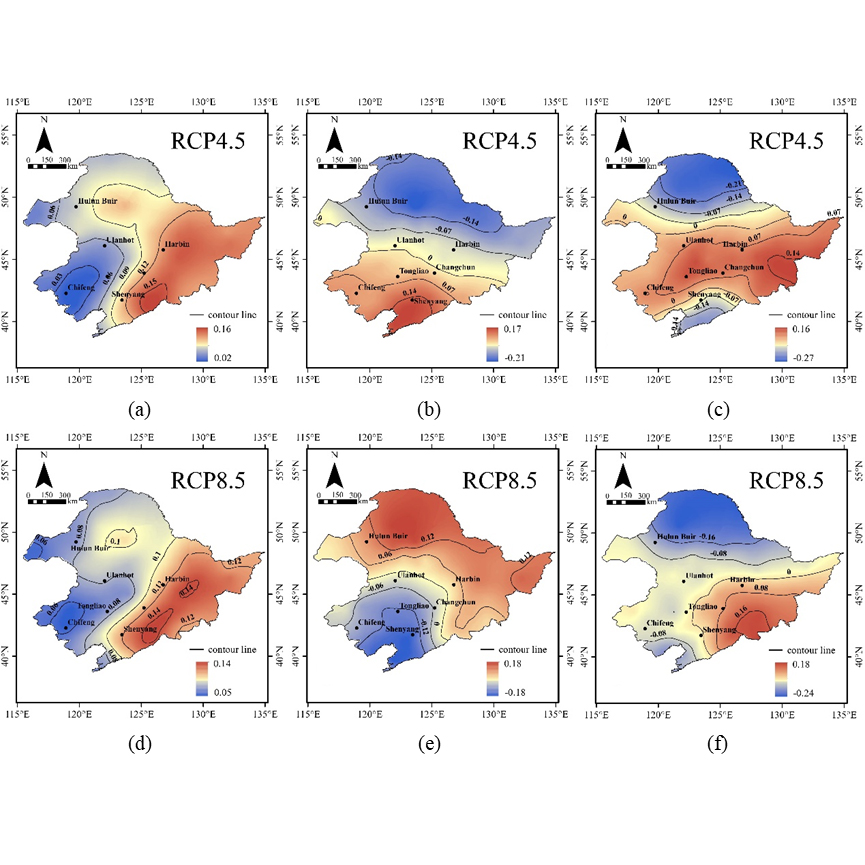Young Researcher Paper Award 2025
🥇Winners
🥇Winners
Print: ISSN 0914-4935
Online: ISSN 2435-0869
Sensors and Materials
is an international peer-reviewed open access journal to provide a forum for researchers working in multidisciplinary fields of sensing technology.
Online: ISSN 2435-0869
Sensors and Materials
is an international peer-reviewed open access journal to provide a forum for researchers working in multidisciplinary fields of sensing technology.
Tweets by Journal_SandM
Sensors and Materials
is covered by Science Citation Index Expanded (Clarivate Analytics), Scopus (Elsevier), and other databases.
Instructions to authors
English 日本語
Instructions for manuscript preparation
English 日本語
Template
English
Publisher
MYU K.K.
Sensors and Materials
1-23-3-303 Sendagi,
Bunkyo-ku, Tokyo 113-0022, Japan
Tel: 81-3-3827-8549
Fax: 81-3-3827-8547
MYU Research, a scientific publisher, seeks a native English-speaking proofreader with a scientific background. B.Sc. or higher degree is desirable. In-office position; work hours negotiable. Call 03-3827-8549 for further information.

MYU Research
(proofreading and recording)

MYU K.K.
(translation service)

The Art of Writing Scientific Papers
(How to write scientific papers)
(Japanese Only)
is covered by Science Citation Index Expanded (Clarivate Analytics), Scopus (Elsevier), and other databases.
Instructions to authors
English 日本語
Instructions for manuscript preparation
English 日本語
Template
English
Publisher
MYU K.K.
Sensors and Materials
1-23-3-303 Sendagi,
Bunkyo-ku, Tokyo 113-0022, Japan
Tel: 81-3-3827-8549
Fax: 81-3-3827-8547
MYU Research, a scientific publisher, seeks a native English-speaking proofreader with a scientific background. B.Sc. or higher degree is desirable. In-office position; work hours negotiable. Call 03-3827-8549 for further information.

MYU Research
(proofreading and recording)

MYU K.K.
(translation service)

The Art of Writing Scientific Papers
(How to write scientific papers)
(Japanese Only)
Sensors and Materials, Volume 37, Number 4(2) (2025)
Copyright(C) MYU K.K.
Copyright(C) MYU K.K.
|
pp. 1491-1502
S&M4000 Research Paper of Special Issue https://doi.org/10.18494/SAM5386 Published: April 18, 2025 Evolution Characteristics of Future Climate Change in Northeast China [PDF] Zheng Chu, Lingyan Wang, Yanghui Ji, Baocai Zhou, Jingjin Gong, Qiujing Wang, and Li Chen (Received October 1, 2024; Accepted April 4, 2025) Keywords: climate change, spatiotemporal characteristics, Northeast China
On the basis of the meteorological data in the low-emission representative concentration pathway (RCP) 4.5 and high-emission RCP8.5 scenarios from the regional climate model output for 2021–2099, spatiotemporal changes in mean annual temperature, annual precipitation, and the average daily radiation in Northeast China in the future were analyzed using statistical methods in this study. The results are as follows. (1) The mean annual temperatures in the RCP4.5 and RCP8.5 scenarios are 6.26 and 7.36 °C, respectively, both showing a trend of significant increase. The increase rate in the RCP8.5 scenario is higher; there are more years with abrupt change in the RCP4.5 scenario. The temperature in the RCP4.5 scenario has two periods of 2 and 4 years, whereas that in the RCP8.5 scenario is composed of two periods that fail the significance test. The empirical orthogonal functions (EOFs) of the first feature vector fields in the RCP4.5 and RCP8.5 scenarios are 90.26 and 96.61%, respectively. The change types are consistent, and the sensitive areas of variation mainly appear in the western and northern regions. (2) The annual precipitation in the RCP4.5 and RCP8.5 scenarios are 959.95 and 949.02 mm, respectively, showing a nonsignificant increase trend. Among them, abrupt changes in annual precipitation are more frequent in the RCP8.5 scenario, and there are 2 and 6 years in the RCP4.5 scenario and 3 and 5 years in the RCP8.5 scenario. The EOFs of the first three feature vectors are 65.66 and 66.77%. (3) The average daily radiation are 8.56 and 8.80 MJ/(m2·d) in the RCP4.5 and RCP8.5 scenarios, respectively, both showing a significant increase trend, with a higher increase rate in the RCP8.5 scenario. The abrupt changes in the two scenarios show a large difference, and radiation in the RCP4.5 scenario has a 4-year period and that in the RCP8.5 scenario has a 3-year period. The EOFs of the first three feature vectors are 66.47 and 81.38% in the RCP4.5 and RCP8.5 scenarios, respectively.
Corresponding author: Lingyan Wang and Yanghui Ji  This work is licensed under a Creative Commons Attribution 4.0 International License. Cite this article Zheng Chu, Lingyan Wang, Yanghui Ji, Baocai Zhou, Jingjin Gong, Qiujing Wang, and Li Chen, Evolution Characteristics of Future Climate Change in Northeast China, Sens. Mater., Vol. 37, No. 4, 2025, p. 1491-1502. |
Forthcoming Regular Issues
Forthcoming Special Issues
Special Issue on Novel Sensors, Materials, and Related Technologies on Artificial Intelligence of Things Applications
Guest editor, Teen-Hang Meen (National Formosa University), Wenbing Zhao (Cleveland State University), and Cheng-Fu Yang (National University of Kaohsiung)
Call for paper
Special Issue on Unique Physical Behavior at the Nano to Atomic Scales
Guest editor, Takahiro Namazu (Kyoto University of Advanced Science)
Call for paper
Special Issue on Support Systems for Human Environment Utilizing Sensor Technology and Image Processing Including AI
Guest editor, Takashi Oyabu (Nihonkai International Exchange Center)
Call for paper
Special Issue on Mobile Computing and Ubiquitous Networking for Smart Society
Guest editor, Akira Uchiyama (The University of Osaka) and Jaehoon Paul Jeong (Sungkyunkwan University)
Call for paper
Special Issue on Innovations in Multimodal Sensing for Intelligent Devices, Systems, and Applications
Guest editor, Jiahui Yu (Research scientist, Zhejiang University), Kairu Li (Professor, Shenyang University of Technology), Yinfeng Fang (Professor, Hangzhou Dianzi University), Chin Wei Hong (Professor, Tokyo Metropolitan University), Zhiqiang Zhang (Professor, University of Leeds)
Call for paper
Special Issue on Signal Collection, Processing, and System Integration in Automation Applications
Guest editor, Hsiung-Cheng Lin (National Chin-Yi University of Technology)
Call for paper
-
For more information of Special Issues (click here)
-
Special Issue on Artificial Intelligence Predication and Application for Energy-saving Smart Manufacturing System
- Accepted papers (click here)
- High-precision Autonomous Driving Map Quality Inspection Indicator System and Evaluation Method
Chengcheng Li, Ming Dong,1 Hongli Li, Xunwen Yu, Yongxuan Liu, and Chong Zhang
- High-precision Autonomous Driving Map Quality Inspection Indicator System and Evaluation Method
- Accepted papers (click here)
- Scalable Real-time Energy Monitoring, Analysis, and Optimization in Five-axis Machine Tools: An Industrial Internet of Energy-based Approach
Swami Nath Maurya, Kun-Ying Li, Windu Aditya Nur Faeza, and Yue-Feng Lin
- Scalable Real-time Energy Monitoring, Analysis, and Optimization in Five-axis Machine Tools: An Industrial Internet of Energy-based Approach
Guest editor, Cheng-Chi Wang (National Sun Yat-sen University)
Call for paper
Special Issue on Advanced Materials and Technologies for Sensor and Artificial- Intelligence-of-Things Applications (Selected Papers from ICASI 2025)
Guest editor, Sheng-Joue Young (National United University)
Conference website
Call for paper
Special Issue on Multisource Sensors for Geographic Spatiotemporal Analysis and Social Sensing Technology Part 5
Guest editor, Prof. Bogang Yang (Beijing Institute of Surveying and Mapping) and Prof. Xiang Lei Liu (Beijing University of Civil Engineering and Architecture)
Special Issue on Redefining Perception: Applications of Artificial-intelligence-driven Sensor Systems: Part 2
Guest editor, Pitikhate Sooraksa (King Mongkut’s Institute of Technology Ladkrabang)
Call for paper
Special Issue on Materials, Devices, Circuits, and Analytical Methods for Various Sensors (Selected Papers from ICSEVEN 2025)
Guest editor, Chien-Jung Huang (National University of Kaohsiung), Mu-Chun Wang (Minghsin University of Science and Technology), Shih-Hung Lin (Chung Shan Medical University), Ja-Hao Chen (Feng Chia University)
Conference website
Call for paper
Special Issue on Sensing and Data Analysis Technologies for Living Environment, Health Care, Production Management, and Engineering/Science Education Applications (2025)
Guest editor, Chien-Jung Huang (National University of Kaohsiung), Rey-Chue Hwang (I-Shou University), Ja-Hao Chen (Feng Chia University), Ba-Son Nguyen (Lac Hong University)
Call for paper
Special Issue on Advances in Sensors and Computational Intelligence for Industrial Applications
Guest editor, Chih-Hsien Hsia (National Ilan University)
Call for paper
Special Issue on AI-driven Sustainable Sensor Materials, Processes, and Circular Economy Applications
Guest editor, Shih-Chen Shi (National Cheng Kung University) and Tao-Hsing Chen (National Kaohsiung University of Science and Technology)
Call for paper
- Accepted papers (click here)
Copyright(C) MYU K.K. All Rights Reserved.
